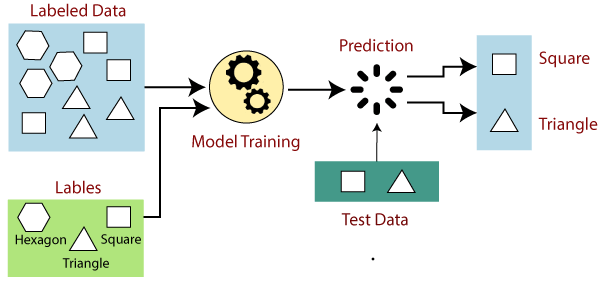What is Supervised Learning?
Supervised learning can be grouped further in two categories of algorithms:
- Regression
- Classification
1. Regression
Regression is a type of supervised learning that aims to predict continuous numeric values based on input features. In regression, the goal is to learn a function that maps input variables to a continuous output variable.
Regression algorithms are commonly used for predicting real-valued outputs such as stock prices, housing prices, or the probability of an event occurring.
Some common regression algorithms include:
Linear Regression: Linear regression models the relationship between the input variables and the output variable as a linear equation. It tries to find the best-fit line that minimizes the distance between the predicted and actual values.
Polynomial Regression: Polynomial regression is an extension of linear regression that models the relationship between the input variables and the output variable as a polynomial equation of a given degree.
Ridge Regression: Ridge regression is a regularized version of linear regression that adds a penalty term to the cost function to prevent overfitting.
Lasso Regression: Lasso regression is another regularized version of linear regression that adds a penalty term to the cost function, but unlike Ridge regression, it uses the absolute values of the coefficients.
Decision Tree Regression: Decision tree regression builds a model by recursively splitting the data into subsets based on the values of input features and predicting the average of the target variable in each subset.
Random Forest Regression: Random forest regression is an ensemble method that combines multiple decision tree regressors to improve the prediction accuracy and reduce overfitting.
The choice of regression algorithm depends on the nature of the problem, the available data, and the desired level of accuracy and interpretability.
2. Classification
Classification is a type of supervised learning that aims to predict categorical or discrete output values based on input features. In classification, the goal is to learn a function that maps input variables to a set of discrete output classes.
Classification algorithms are commonly used for predicting the probability of an event occurring, or for identifying patterns in data such as fraud detection, spam filtering, or image recognition.
Some common classification algorithms include:
Logistic Regression: Logistic regression is a linear model that models the relationship between the input variables and the probability of a binary outcome.
Decision Tree Classification: Decision tree classification builds a model by recursively splitting the data into subsets based on the values of input features and predicting the class label of each subset.
Random Forest Classification: Random forest classification is an ensemble method that combines multiple decision tree classifiers to improve the prediction accuracy and reduce overfitting.
Support Vector Machines (SVMs): SVMs find the best hyperplane that separates the data into classes with the largest margin, using a kernel function to transform the input features into a higher-dimensional space.
Naive Bayes: Naive Bayes is a probabilistic classifier that uses Bayes' theorem to calculate the probability of each class given the input features.
K-Nearest Neighbors (KNN): KNN is a non-parametric classifier that assigns the class label of an input sample based on the class labels of its nearest neighbors in the training data.
The choice of classification algorithm depends on the nature of the problem, the available data, and the desired level of accuracy and interpretability.

